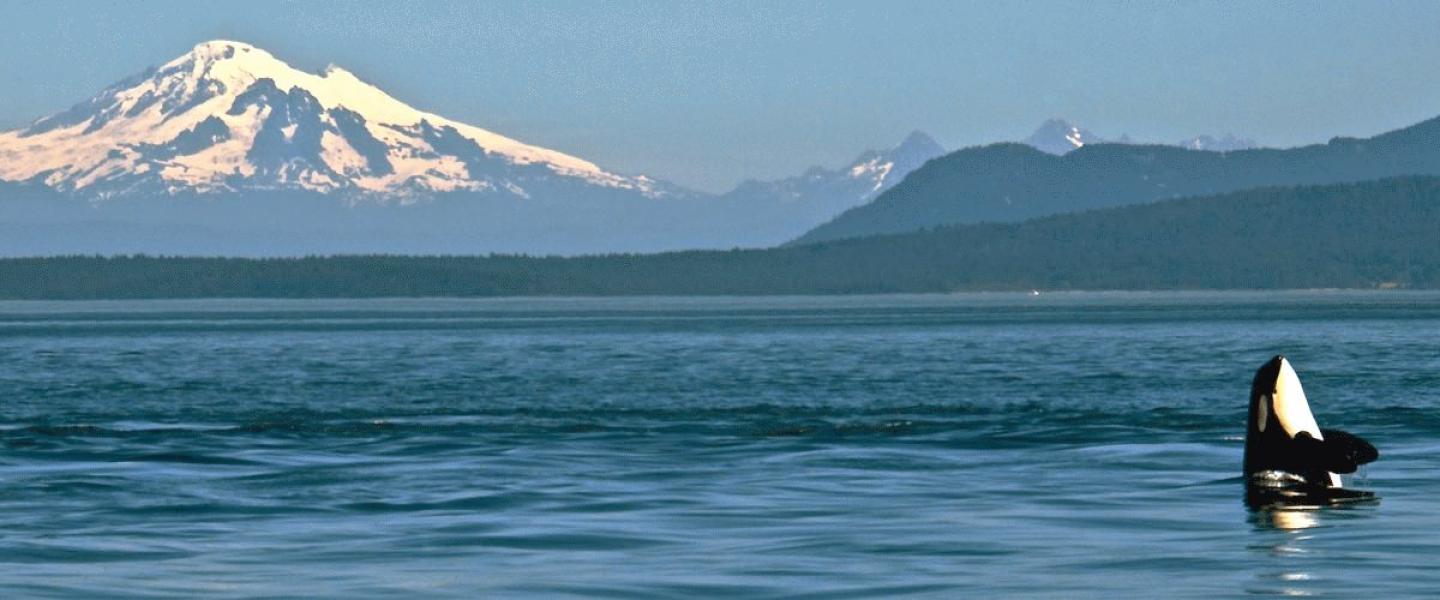
We boarded the Sea Lion today with no orca reports and prepared ourselves to go in search of other wildlife in the area. Just as we were about to depart from the dock, Captain Pete was informed that there were some transient orcas just outside the harbor! So, we made our way out to San Juan Channel and sure enough, there they were.
The Pacific Northwest is an incredibly unique area. One of the reasons I say that, is that we regularly have the opportunity to see TWO different ecotypes of orcas here. An ecotype is a genetically distinct population within a single species, and there are 10 ecotypes across the planet within the species, Orcinus orca, (that's the scientific name for killer whale--try throwing that one out at the next social event you attend, everyone's sure to be impressed and you'll be the hit of the party). Basically, you can think of each ecotype as a subspecies. The two ecotypes that we get to see on our whale watch tours are transient killer whales, and Southern resident killer whales, and there are a number of differences between the two.
Transient killer whales are slightly larger than residents, they are also slightly less vocal, and have more fluid social structures. Perhaps the biggest difference between these two populations though, is their diet. Resident orcas eat fish (primarily Chinook Salmon), while transient orcas are marine mammal eaters. They can prey on animals like seals, porpoises, dolphins, sea lions, and even some of the larger whales. Today, we believe they may have been hunting (successfully) based on the fact that they exhibited some rapid direction changes and erratic movements. This led us to think that they may have caught something small beneath the surface, such as a harbor seal of harbor porpoise. The best part of our transient viewing today was that one of them spyhopped. A spyhop is when a whale comes head first out of the water (usually almost up to their pectoral fins). This behavior is believed to be used for getting a better visual sense of what's happening above the surface--probably checking out the whale watching boats!
It was incredibly lucky to have seen the transients so close to Friday Harbor, but shortly after arriving on scene, we got an additional report. This one however, was for some resident orcas heading south on the Northwest side of the San Juan Island. What?! Transients and residents in the same day?! Yes. This doesn't happen often, but this was going to be our lucky day. So after a while, we left out transient friends and headed over to where the residents had been spotted. Within the southern resident killer whale population, there are three distinct pods; J pod, K pod, and L pod. The resident orcas we had the chance to see today was J pod. We even got to see some awesome surface behaviors such as breaches (especially from the youngsters).
We wrapped up the trip by going to check out the transients one more time on the way back, as well as stopped by Speiden Island to see some harbor seals and some Bald Eagles. All in all, it was a great day (as usual) to be out on the Sea Lion.
Naturalist Alex
M/V Sea Lion, San Juan Safaris